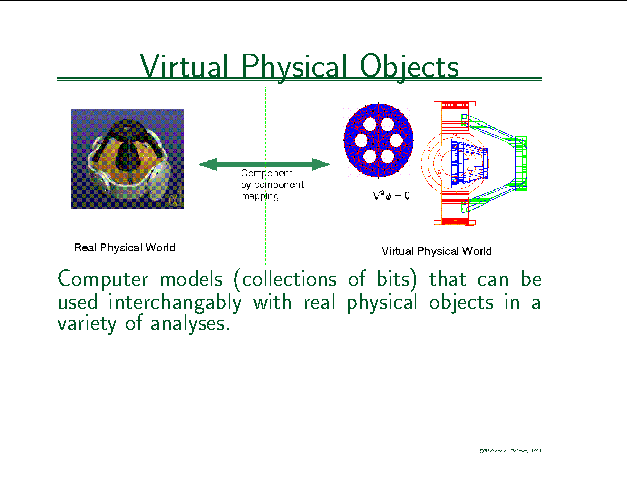
Engineering analysis has the potential to greatly enhance the engineering process. This is especially true when computer analyses can catch problems early in the design cycle.
We in the modeling and simulation group in the CS department at Cornell believe that computer modeling has not even come close to achieving its potential, and I'll spend the next few minutes describing our vision of how computers could be used in design and manufacturing, technical challenges this vision poses, and the technology we are developing to address these challenges.
Our goal is to develop technology to allow us to create computer models that can be used in place of and in concert with real physical models during the design process. ``Virtual Physical Objects.''
If such a goal can be achieved, it provides a number of advantages:
1. Creating computer models can be cheaper, safer, and faster to create and use.
1. Cheaper - because, they are constructed of bits, (electrons) which are easier to construct and reconfigure than real physical models
2. Faster, for the same reasons - changing a single parameter can instantaneously redefine which can be instantiated in a matter of seconds or hours instead of days or months.
3. Safer - As an example, the deathrate in flight simulators is much lower than that in real physical aircraft.
2. Such computer models (e.g., of design components) could become commodities - traded on an open electronic R & D; market. For instance, instead of a catalog of motors on line, we could have computer models of motors on line. Then when designing an artifact like the seeker, we could test (models of) different motors in the design.
The ultimate goal is that of a computer model (a bunch of bits) that can be used in place of a real object in a variety of situations.